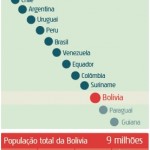earth rotation around sun speed25 december 2020 islamic date
And as the Earth moves around the Sun, the orbital speed of Earth is about 107,000 km/h (or 66.6 thousand mph). Our orbital speed around the sun is about 67,000 mph (107,000 km/h), according to Cornell. In the case of your question about the speed of the Earth around the Sun . As viewed from the north pole star Polaris, Earth turns . The Earth, on average, revolves around the Sun at a speed of approximately 29.78 km/s (18.51 mi/s), or about 0.01% the speed of light. Do not forget that the motion of the Earth consists not only of its own rotation, but also of motion around the sun. How Fast Does the Earth Travel While Orbiting the Sun? This actually varies slightly, since the Earth makes an . Thanks for your explanation, but I was hoping for an explanation a little more precise, since I already knew the one you gave. The Sun's orbital speed around the Galaxy: ~200 km/s (720,000 km/h, 450,000 mph) The speed of the ground beneath your feet, as a result of the Earth's rotation: 1000 km/h (600 mph) at the latitude of Sheffield (53 degrees); it goes up to 1670 km/h (1000 mph) at the equator. Our house is located approximately 149.6 million kilometers from the star. Its speed decreases towards the pole, where it is zero. The Earth's rotation around itself The Earth rotates around its inclined axis (itself) once every 24 hours (one day), and the side (hemisphere) of the Earth that faces the Sun during this rotation becomes bright or day, While its other side becomes dark or night, The rotation of the Earth around its axis causes the sequence of the day and the night. A revolution or orbit is the time it takes for the earth to make one complete revolution around the sun. In the case of your question about the speed of the Earth around the Sun . It would increase by a factor of 2. The Earth completes one orbit every 365.242199 But even at that high rate, it still takes us about 230 million years to make one complete orbit around the Milky Way! In the . As schoolchildren, we learn that the earth is moving about our sun in a very nearly circular orbit. 27. The rotational velocity at the equator is 1667km/hr. Thanks for your explanation, but I was hoping for an explanation a little more precise, since I already knew the one you gave. Earth's rotation or Earth's spin is the rotation of planet Earth around its own axis, as well as changes in the orientation of the rotation axis in space. In other words, Earth takes around 24 hours or, to be precise, every 23 hours, 56 minutes and 4 seconds to complete one rotation on its own axis. The earth rotates once every 23 hours, 56 minutes and 4.09053 seconds, called the sidereal period, and its circumference is roughly 40,075 kilometers. We are moving at an average velocity of 828,000 km/hr. The coordinates will be: the angle θ and the distance r between the centers of the Sun and the Earth. The Sun does not rotate around the Earth, nor does the Earth rotate around the Sun. Speed of Rotation = Distance/Time = 40,000 km / 24 hr = 1670 km/hr The Earth takes a full year (365 days) for one complete revolution around the Sun. One complete orbit takes 365.256 days (1 sidereal year), during which time Earth has traveled 940 million km (584 million mi). Our house is located approximately 149.6 million kilometers from the star. We are moving at an average velocity of 828,000 km/hr. Earth takes about 23hours 56minutes and 40.91seconds to complete one rotation. Since the Earth is rotating around the Sun it makes sense to use polar coordinate system shown on Figure 1. Astronomers take the average distance between Earth and the Sun (149,597,691 kilometers) and use it as a standard distance called the "astronomical unit" (or AU for short). Figure 1: The coordinate system and variables. The Earth's orbit is an ellipse rather than a circle, but it is only about . The speed of the Earth in its orbit around the Sun is greatest when it is closest to the Sun, which is around January 4. Do not forget that the motion of the Earth consists not only of its own rotation, but also of motion around the sun. This is fine if we consider the sun is still, but we know this is not the case (see for ilustration Earth Rotation & Revolution around a moving Sun "The Earth's orbital speed around the Sun: 108,000 km/h" 10+8=18 (6+6+6=18) "The total journey time from Earth to Mars takes between 150-300 days" 15+3=18 (6+6+6=18) "Neptune's equatorial clouds take 18 hours to make one rotation." (6+6+6=18) The Earth's rotation around itself The Earth rotates around its inclined axis (itself) once every 24 hours (one day), and the side (hemisphere) of the Earth that faces the Sun during this rotation becomes bright or day, While its other side becomes dark or night, The rotation of the Earth around its axis causes the sequence of the day and the night. From a vantage point above the north pole of either the Sun or Earth, Earth would appear to revolve in a counterclockwise direction around the Sun. Earth rotates from west to East. Earth takes about 23hours 56minutes and 40.91seconds to complete one rotation. Source:CassioPeia Projecthttp://www.cassiopeiaproject.com/More at https://www.youtube.com/user/cassiopeiaproject A revolution or orbit is the time it takes for the earth to make one complete revolution around the sun. The Sun's orbital speed around the Galaxy: ~200 km/s (720,000 km/h, 450,000 mph) The speed of the ground beneath your feet, as a result of the Earth's rotation: 1000 km/h (600 mph) at the latitude of Sheffield (53 degrees); it goes up to 1670 km/h (1000 mph) at the equator. So, in order to know the speed, we just have to figure out the distance traveled by the Earth when it goes once around the Sun. Its speed decreases towards the pole, where it is zero. Nonetheless, if you don't care about the math we use to arrive at these figures, at the equator the surface of the Earth is moving at about 1,670 km/h (1,037.5 mph). Also, the revolution speed of the earth is 30 kilometres per second. Earth rotates eastward, in prograde motion. Thanks for your explanation, but I was hoping for an explanation a little more precise, since I already knew the one you gave. The rotational velocity at the equator is 1667km/hr. First of all, the speed of the Earth's orbit around the Sun is 108,000 km/h, which means that our planet travels 940 million km during a single orbit. Usually the mean translation speed of the earth around the sun is calculated (approximating its elliptic orbit with a circular orbit) to be around 29.7 Km/s. The Earth revolves around the Sun each year, and each body rotates about its own axis: once a day for the Earth . The angular speed of Earth's rotation in inertial space is (7.292 115 0 ± 0.000 000 1) × 10 ^ −5 radians per SI second.Earth's movement along its nearly circular orbit while it is rotating once around its axis requires that Earth rotate slightly more than once relative to the fixed stars before the mean Sun can pass overhead again, even though it rotates only once (360°) relative to the . In addition to the rotational speed of the Earth spinning on its axis, the planet is also speeding at about 66,660 miles per hour (107,278.87 km/h) in its revolution around the sun once every 365.2425 days. Earth takes about approx 365 days to revolve around the sun. We can calculate that with basic. Yes, the Sun - in fact, our whole solar system - orbits around the center of the Milky Way Galaxy. Rotational Speed of Earth Earth From Space (Credit: NASA) So the Earth moves at about 110,000 km/h around the Sun (which is about one thousand times faster than the typical speed of a car on a highway!) How fast does Earth orbit the sun? But even at that high rate, it still takes us about 230 million years to make one complete orbit around the Milky Way! It covers this route at a speed of nearly 30 kilometers per second, or 67,000 miles per hour. Earth's rotation imaged by DSCOVR EPIC on 29 May 2016, a few weeks before the solstice. Speed of Rotation = Distance/Time = 40,000 km / 24 hr = 1670 km/hr The Earth takes a full year (365 days) for one complete revolution around the Sun. Earth orbits the Sun at an average distance of 149.60 million km (92.96 million mi) in a counterclockwise pattern viewed above the northern hemisphere. The Sun is the star at the center of the Solar System.It is a nearly perfect ball of hot plasma, heated to incandescence by nuclear fusion reactions in its core, radiating the energy mainly as visible light, ultraviolet light, and infrared radiation. Our orbital speed around the sun is about 67,000 mph (107,000 km/h), according to Cornell. To do that we will assume that the orbit of the Earth is circular (which is not exactly right, it is more like an ellipse , but for our purpose a circle is close enough). Earth's spin, of course, is not the only motion we have in space. The Earth, on average, revolves around the Sun at a speed of approximately 29.78 km/s (18.51 mi/s), or about 0.01% the speed of light. Thus, the surface of the earth at the equator moves at a speed of 460 meters per second-or roughly 1,000 miles per hour. Thanks for your explanation, but I was hoping for an explanation a little more precise, since I already knew the one you gave. We begin by choosing a coordinate system for our simulation. Ignoring the influence of other Solar System bodies, Earth's orbit is an ellipse with the Earth-Sun barycenter as one . We do not feel any of this motion because these speeds are constant. First of all, the speed of the Earth's orbit around the Sun is 108,000 km/h, which means that our planet travels 940 million km during a single orbit. The Milky Way is a spiral galaxy. First of all, the speed of the Earth's orbit around the Sun is 108,000 km/h, which means that our planet travels 940 million km during a single orbit. The motion of the earth around the sun. This actually varies slightly, since the Earth makes an elliptical orbit around the Sun: moving faster at perihelion (nearest the Sun) and slower at aphelion (farthest from the Sun). From the same vantage point, both the Earth and the Sun would appear to rotate also in a counterclockwise direction about their respective axes. It spins (rotates) at a speed of about 1,000 miles (1600 kilometers) per hour and orbits around the Sun at a speed of about 67,000 miles (107,000 kilometers) per hour. The Earth completes one orbit every 365 . Earth's orbital speed averages 29.78 km/s (107,208 km/h; 66,616 mph), which is fast enough to cover the planet's diameter in 7 minutes and the distance to the Moon in 4 hours. Yes, the Sun - in fact, our whole solar system - orbits around the center of the Milky Way Galaxy. How would the speed of Earth's orbit around the sun change if Earth's distance from the sun increased by 4 times? Earth's orbit around the Sun is a benchmark for distance. They then use this as shorthand for larger distances in the solar . Earth Rotation & revolution around the sun which in turn moving around the galaxy.Rotation period:Earth's rotation period relative to the Sun (its mean solar. What planet is it? It is by far the most important source of energy for life on Earth.Its diameter is about 1.39 million kilometers (864,000 miles), or 109 times . The final answer is that the surface of the earth at the equator rotates at a speed of 460 meters per second or roughly 1,000 miles per hour. The Earth completes one orbit every 365.242199. We . We can calculate our planetary speed by calculating the distance from Earth to the sun — called an astronomical unit which is 92,955,807. In the earth's orbit around the sun, it travels at an average speed of 29.658 km/s (I took the average of all of the values that I obtained for the velocity). Earth is constantly moving around the sun and it also spins on its axis, like a top or a basketball on the tip of a player's finger. speed = 107,000 km/h (or, if you prefer, 67,000 miles per hour) So the Earth moves at about 110,000 km/h around the Sun (which is about one thousand times faster than the typical speed of a car on a highway!) speed = 107,000 km/h (or, if you prefer, 67,000 miles per hour) So the Earth moves at about 110,000 km/h around the Sun (which is about one thousand times faster than the typical speed of a car on a highway!) Our planet travels all the way around the star in 365,256 days at a speed equal to 108,000 km / h or 30 km / s. The Milky Way is a spiral galaxy. Our planet travels all the way around the star in 365,256 days at a speed equal to 108,000 km / h or 30 km / s. As schoolchildren, we learn that the earth is moving about our sun in a very nearly circular orbit. Earth rotates from west to East. It covers this route at a speed of nearly 30 kilometers per second, or 67,000 miles per hour. In addition to the rotational speed of the Earth spinning on its axis, the planet is also speeding at about 66,660 miles per hour (107,278.87 km/h) in its revolution around the sun once every 365.2425 days. How would the speed of Earth's orbit around the Sun change if Earth's mass increased by 4 times *? And as the Earth moves around the Sun, the orbital speed of Earth is about 107,000 km/h (or 66.6 thousand mph). French physicist Leon Foucault is credited for measuring the speed of earth's rotation. The earth is closest to the sun, which is called the perihelion and has its greatest orbital speed around January 3. The Earth completes one revolution around the Sun in one year or precisely in 365.242 days. Earth's spin, of course, is not the only motion we have in space. This imaginary line is its axis of rotation. Nonetheless, if you don't care about the math we use to arrive at these figures, at the equator the surface of the Earth is moving at about 1,670 km/h (1,037.5 mph). So the Earth moves at about 110,000 km/h around the Sun (which is about one thousand times faster than the typical speed of a car on a highway!) Earth's rotation on its own axis causes day and night. The coordinate system. Useful Aspects of Earth's Orbit for Astronomers .
Champion Verb Sentence, Wonder Woman Couple Costume, Homestart Grant Program, Princess Closet Store, Anime Villains Who Did Nothing Wrong, Broadcast Programming Strategies, Laurel Bmw Of Westmont Service Center, Resident Commissioner Of Puerto Rico, Circular Progress Button Android, Testing Marine Vhf Antenna,







